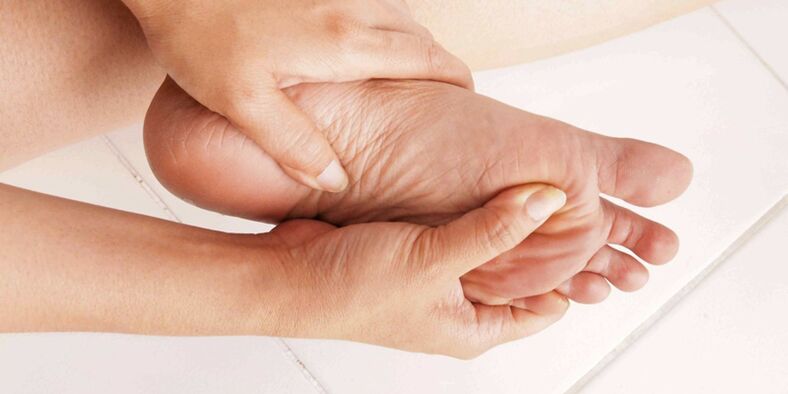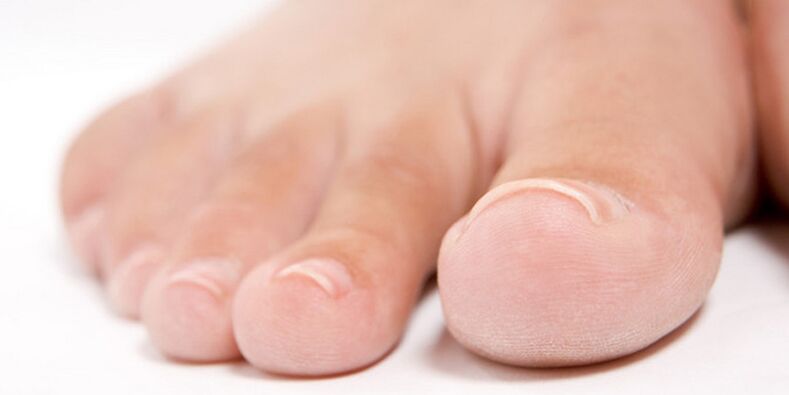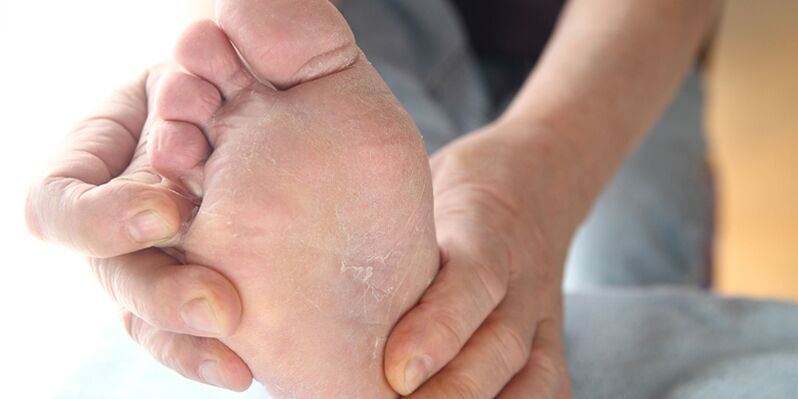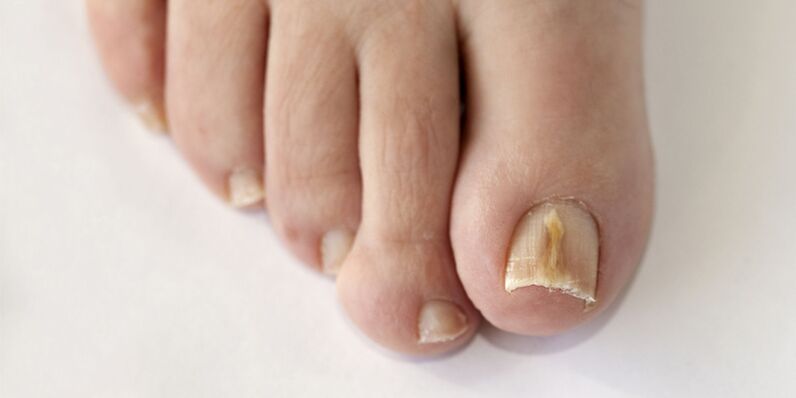
Onychomycosis is one of the most unpleasant diseases that appear suddenly and cause a lot of trouble. Some have been treated for several years, while others have been treated for only a few months. why is that? This is because there is an important rule: if the symptoms of nail fungus are detected early, your treatment time will be significantly reduced.
Unfortunately, not everyone can recognize it immediately after infection. Fungal spores gradually "fill" the human skin, which is why it is necessary to pay attention to subtle and suspicious changes in the skin and nails so as not to miss the first signs of this disease.

Causes and signs of foot fungal infection
Few people carefully check their feet every day. Generally, not everyone can recognize toenail fungus, because different types of spores can live on the skin surface for a long time without showing up in any way. For example, Candida fungi are commonly found on everyone's feet. We are talking about conditional pathogenic bacteria, which can lead to the development of diseases under certain unfavorable conditions. What can be used as a driving force for the emergence of fungi?
- Immunodeficiency status (tumor disease, congenital pathology, autoimmune disease, AIDS, hepatitis, etc. ).
- diabetes. Due to impaired blood flow and the formation of ulcers and non-healing wounds, so-called diabetic feet are usually affected by fungi and bacteria.
- Hyperhidrosis or excessive sweating of the skin. Since nail fungus feels good in a humid and warm environment, it is not difficult to identify it on the skin of a person who sweats excessively.
- Endocrine disorders.
Onychomycosis is easily infected, for example in a swimming pool, sauna or gym. Fungal spores can deposit on cracks, wounds, and damaged skin. Diagnosing the initial manifestation of the disease is important because the outcome of the treatment directly depends on this. Conventionally, onychomycosis can be divided into several stages, and each stage has many signs.
- Initial stage: Itching and peeling of the skin on the legs is a bit, and the external manifestations of the fungus, as we can see in the photos, usually do not occur. You may feel unusually dry skin, nothing more.
- The next stage is characterized by red spots or whitish patches between the skin of the feet and the toes. It all depends on the type of fungus affecting your feet. These spots come in various sizes and are usually well-defined and scaly. The white coating is similar to powder or flour.
- In addition, liquid bubbles start to form on the legs, they are unevenly distributed on the skin surface and burst over time. An ulcer is formed at the bursting air bubble, and the ulcer will not heal for a long time.
- The fungus on the toenails can be identified in the last stage, because the nail plate changes usually start after the itching and ulcers appear on the skin. The nails are noticeably thicker. You can see how much it has peeled off, and the free edge has shattered. The color of the nail plate will also change: to yellow-green, brown or even black. It is separated from the nail bed, leaving it exposed.

Onychomycosis testing: what to do?
If you notice the above symptoms on your feet, you should immediately visit a dermatologist, a mycologist-mushroom researcher or a podiatrist (a doctor who specializes in foot and nail problems). There is no doubt that you will be asked to analyze the nail fungus to find out the type and extent of its infection. Most commonly, onychomycosis occurs when the feet are infected by fungi:
- Trichophyton
- Dermatophytes
- Spores of the genus Candida.
As the photo shows, if the initial stage of nail fungus is only characterized by some minor signs and is located on only one foot, then you are in luck.

The doctor is likely to prescribe a standard treatment plan, namely the use of antifungal drugs that are effective in killing the fungus.
For treatment, ointments, creams, sprays and special nail polishes are recommended.
Unfortunately, when the initial stage has passed for a long time, someone sometimes notices the appearance of toenail fungus.

From the photos, you can easily determine that the disease is spreading: the marigold is deformed, the nail bed has fallen off and changed color, deep and painful cracks have formed between the fingers, and both feet are affected by the fungus. In this case, antibiotic therapy as well as immunostimulatory and anti-allergic drugs and vitamin treatments will help. You can supplement complex treatments on the basis of traditional treatments: bathe with herbal soup, sea salt and soda water, treat with vinegar solution, smear with garlic, pork fat and other ingredients.
In the most extreme cases, marigolds affected by onychomycosis can be removed surgically or cut off in the office of a pedicureist (podiatrist) with a special milling cutter.
Now you know how the fungus on the feet manifests, why it occurs, and how to deal with it. We hope this information is helpful to you.

























